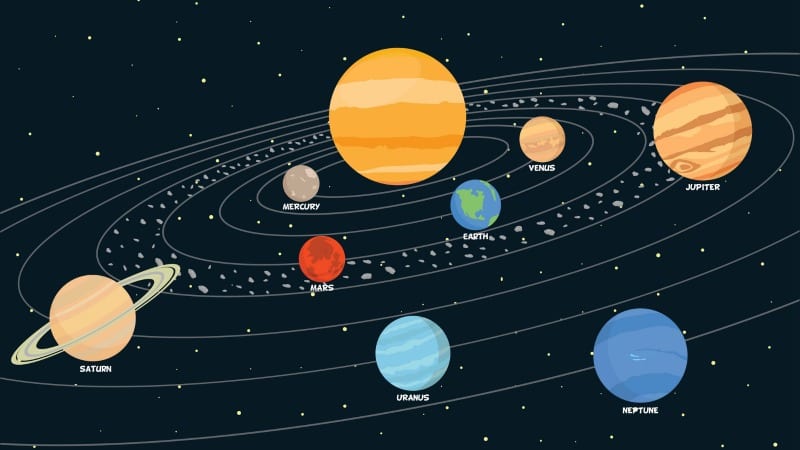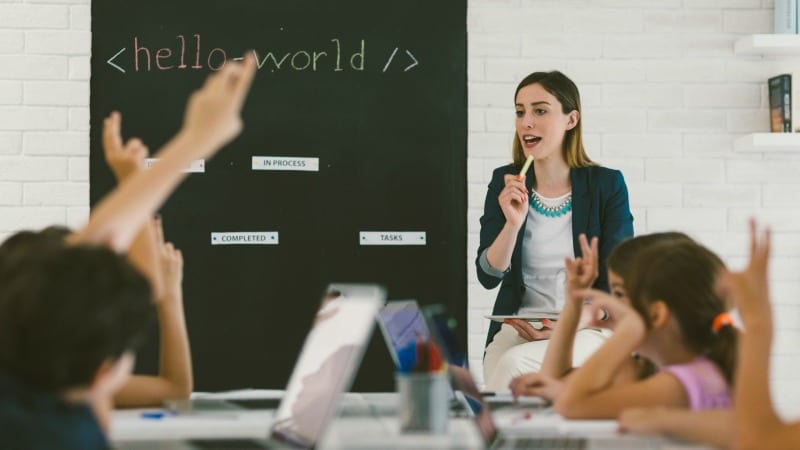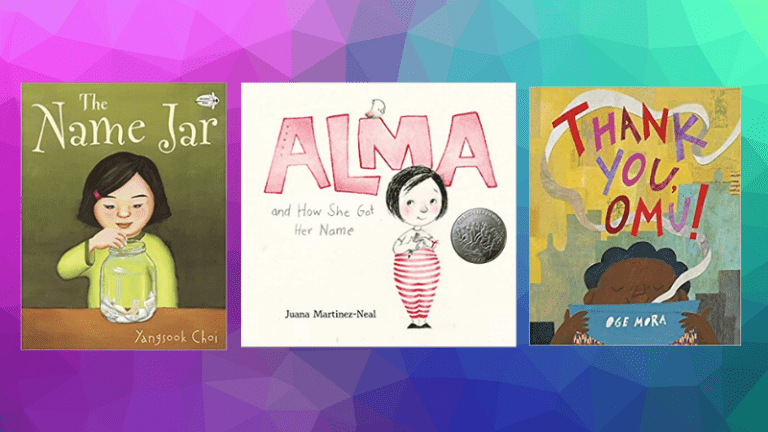I’m crazy about reading. Teaching first grade is basically like being a reading teacher. I’m always looking for new books for my kids. So when I saw an email looking for pilot participants for a program that provided books for my classroom, I signed up right away.
The series of leveled readers I received was designed to introduce students to the core concepts of computer science and programming for kids. Yes, you read that right—computer science for first graders, and I’m a big fan.
Kids naturally love computer science.

I never would have guessed first graders would be interested in computer science 20 years ago when I first started teaching in western New York. But they love it. Over the years, I’ve come to expect more of my students, and they have not disappointed me.
For the past few months, my class has been reading stories that touch on computer science concepts, such as testing, debugging, and collaboration. The books are intended for English Language Arts (ELA), guided reading, or independent reading time. I use them for both whole-group and small-group instruction.
With each book there are hands-on learning activities and experiments to reinforce the concepts. My kids enjoy anything that connects to real life. They are naturally curious and inquisitive about how everyday things work. So this series has definitely been a hit.
It helps students learn other key concepts.

We read one book about the solar system and visiting a science museum. It introduced the concept of simulation. Afterward, the kids drew constellations with white crayons on pieces of black construction paper. Then they put holes where the stars were and held the paper up to the light. It was simple, but they really liked it.
Another book about honeybees explained the importance of collaboration and teamwork. It emphasized that, for a hive to be successful, each bee has an important job to do. For the group activity, we created a circle with a long piece of rope and then laid it on the ground. The kids had to work together to fit everyone inside the circle.
As you can imagine, the hands-on experiments mean kids are moving about the classroom. It’s sort of organized chaos. I tell the kids that it’s okay to have fun and get a little silly. I know the volume of noise will be a little higher when they are all working together and they are very excited. I love seeing them be creative, discover new things on their own, and make connections. But you have to have a plan. I get the materials out ahead of time and set clear expectations to manage the movement.
There’s also help for teachers.

For these lessons, the teacher’s guide suggests vocabulary that ties into the technology and science standards. It provides a good segue from the content to the concepts and helps me stay on track.
The big words—I call them college words—aren’t too much for my first graders. They love learning the computer science vocabulary and showing it off to their families at home. My kids are pretty amazing. They understand more than we often give them credit.
First grade is so much different than it was years ago. Technology is in front of kids every second of the day, whether it’s the new television or a smartphone. They have a greater capacity to imagine and understand some of the technology than those of us who are set in our ways. Young kids are more open to the possibilities.
I expect some teachers will worry that this is all too much for first graders. My experience says it is not. There’s nothing students love more than to be the teacher to others, so they help those students who lag behind. They are ready.
Learn more about the program used in my class right here. Plus, enter to win a copy of Computer Science for the Real World plus a $100 Amazon gift card>>


